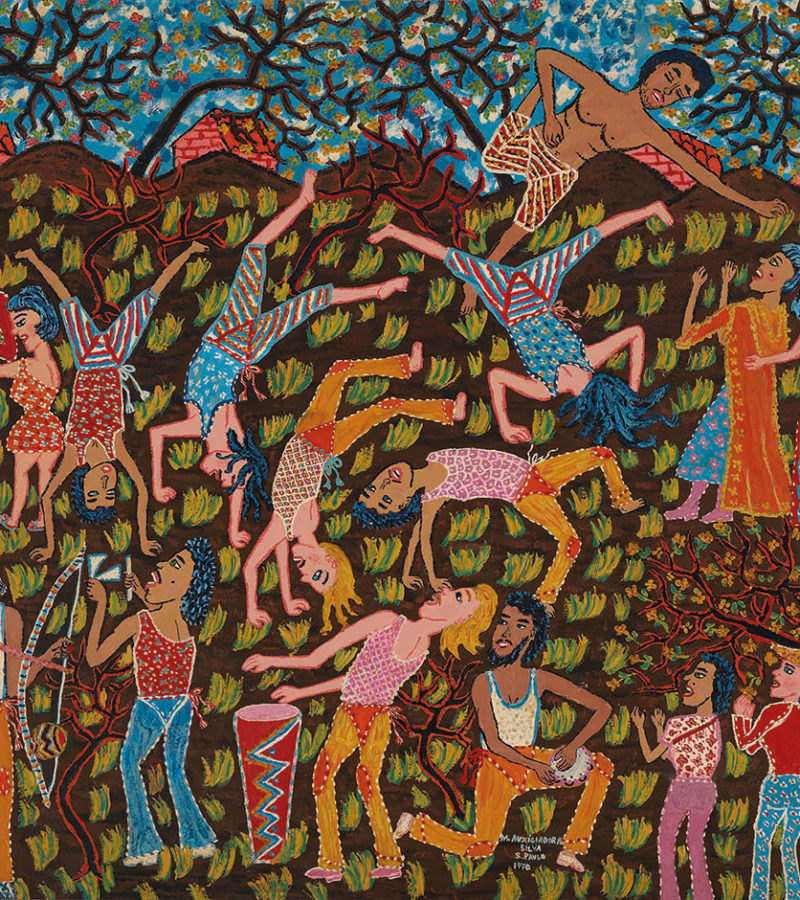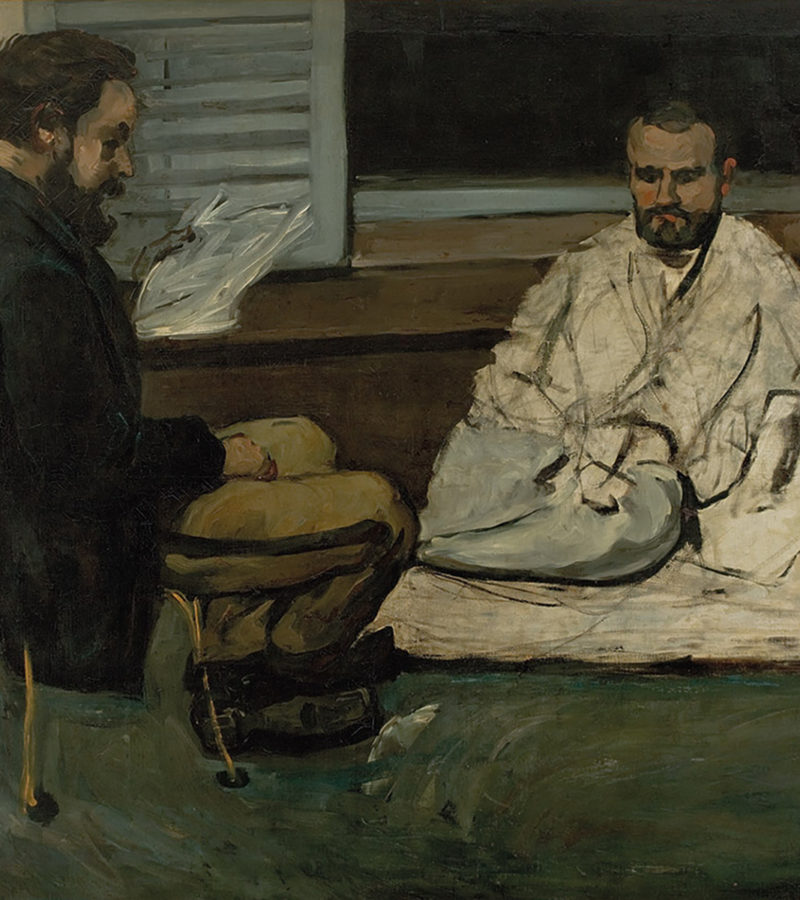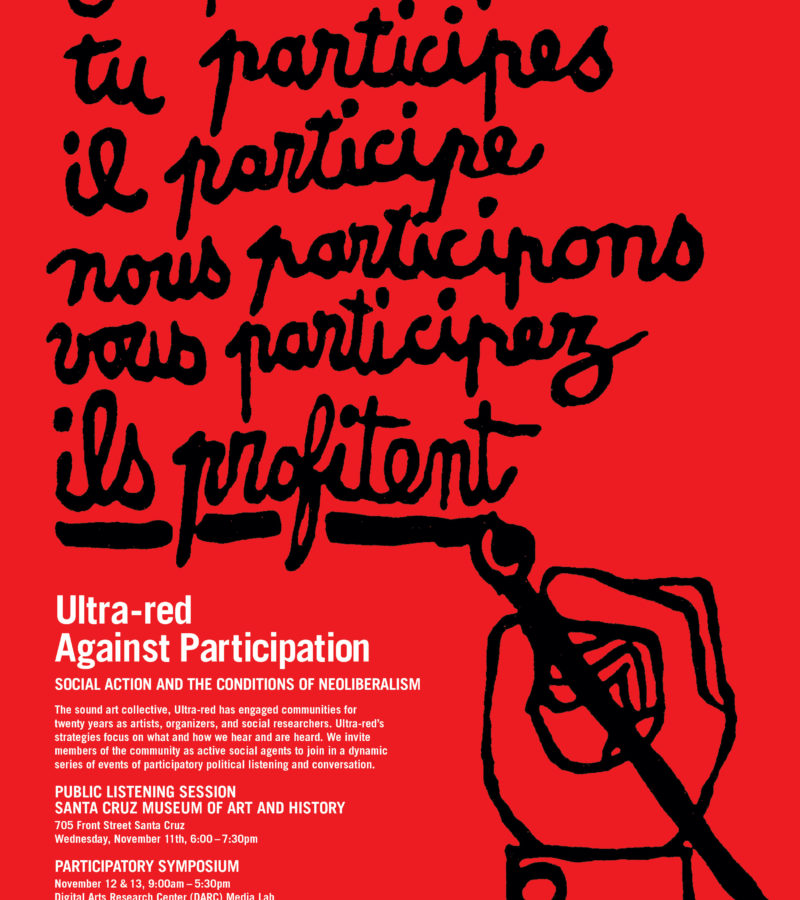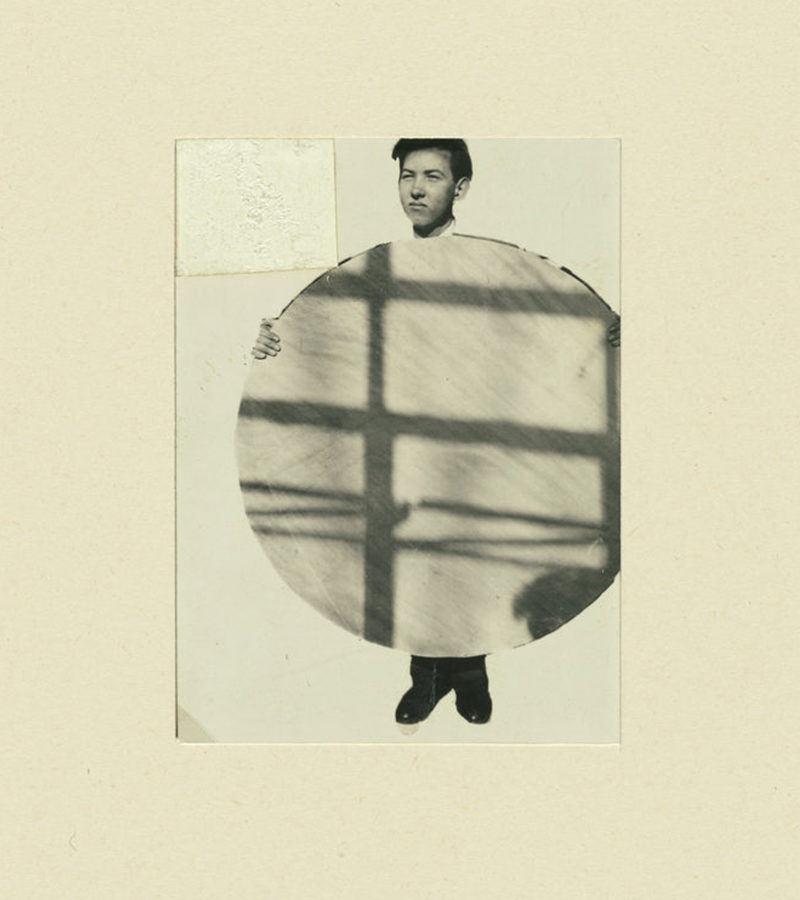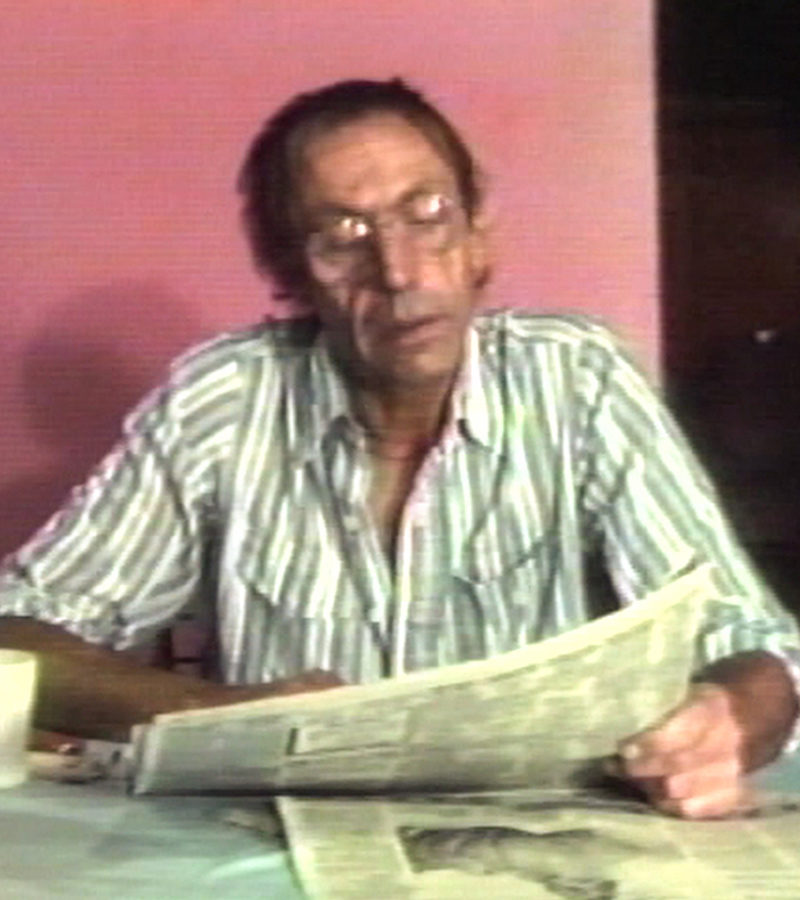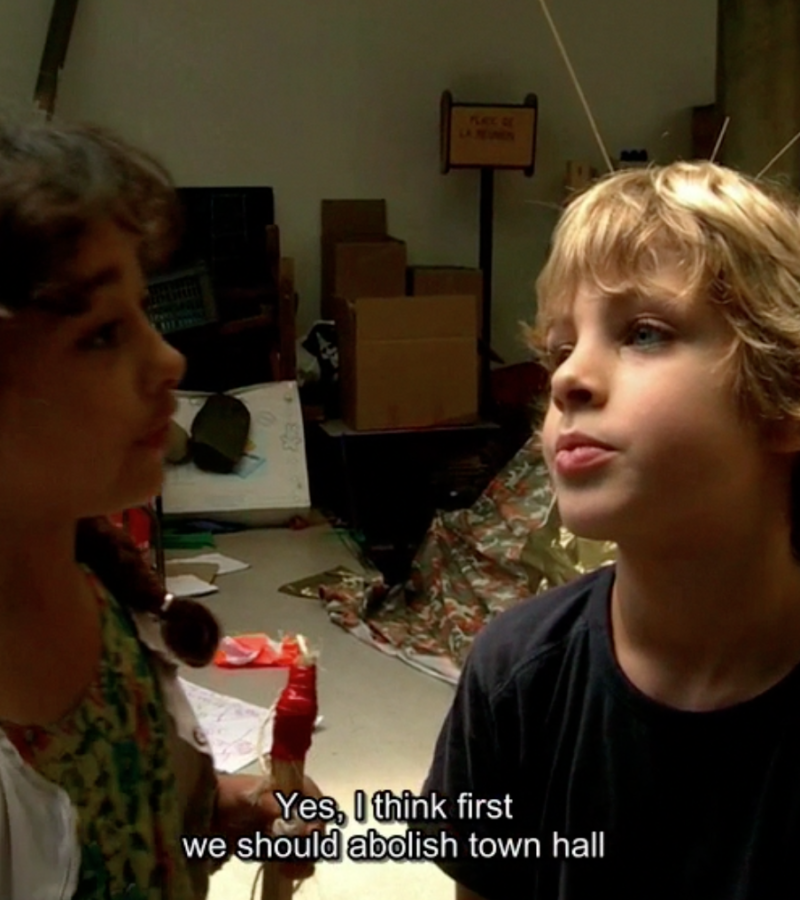School No 6. is a permanent artwork by Russian-born Ilya Kabakov. Installed at Chinati Foundation, it sits within the militarised architecture of the former Fort D. A. Russell in Marfa, Texas embedded in the kind of sprawling desert landscape associated with the image of the great American Cowboy. Presented as a once-functioning school, the ‘abandoned’ building seems incongruous set against the machismo that permeates the Foundation, a contemporary art museum founded by the artist Donald Judd. Yet School No 6. tells a similar story to Judd’s – one of the pursuit of utopia and the construction of an ideology – although this time alluding to a scale incomparable to Judd’s endeavour.
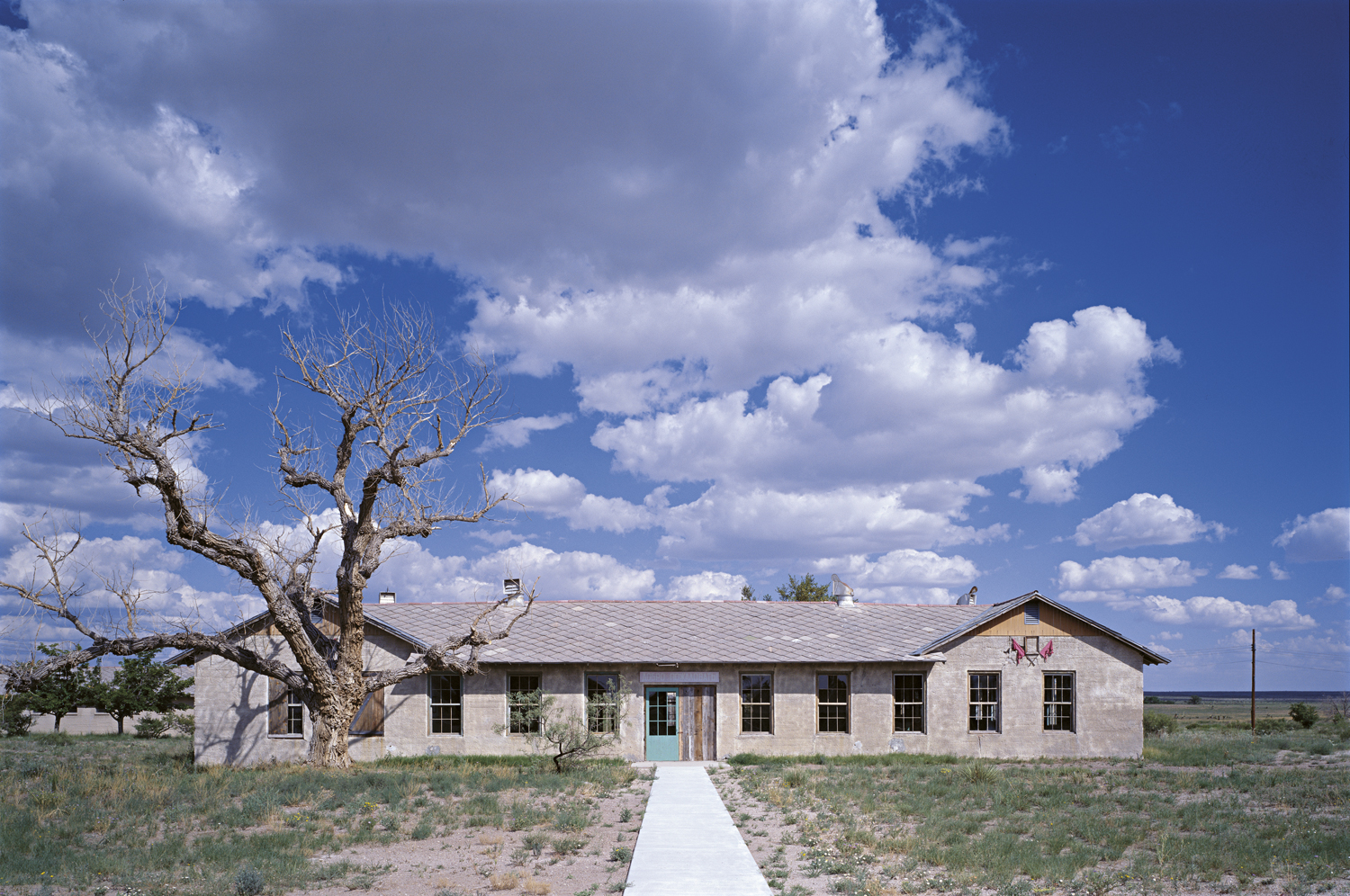
Fiercely independent and dissatisfied with institutional governance and the indelicate exhibition of his work, Judd moved to Marfa in the early 1970s where he spent the rest of his life sympathetically rehabilitating buildings for the optimum presentation of his art. ‘Permanent installations and careful maintenance are crucial to the autonomy and integrity of art’, he wrote in 1982.1 At the end of the ’70s, Judd invited the Dia Foundation to buy the former military site on the edge of the town, ‘to make permanently maintained public installations of contemporary art’,2 and to create an environment within which the art and its surroundings would be inextricably linked.3 Over the years, the entire town became enveloped within the strict parameters of Judd’s vision: his staunch commitment to line, form and materiality and the precise installation of the artwork.
Judd was introduced to Kabakov in 1991 by Marianne Stockebrand and School No. 6 opened only two years later in its own building at the centre of Chinati, encircled by the stalwarts of Minimalism and opposite Judd’s very own magnum opus, 100 untitled works in mill aluminium, 1982–1986. While the generic, functional name of the installation matched that of its minimalist counterparts, the physical form was in clear opposition.

Kabakov presents the school as a ruin. The fence surrounding it is damaged, offering a partial view of an overgrown courtyard and a draped red banner spelling ‘Welcome!’ in Cyrillic. Upon entering the building, the interior is bleak. Crumbling walls are painted a bureaucratic green, beneath a lifeless shade of beige. A blue horizon line cuts the wall in two. On one side, windows are boarded up to prevent natural light from filling the space. The old classrooms are identifiable only via the lesson schedules and learning paraphernalia strewn on the floor. Throughout, dusty, red wooden furniture is mostly without purpose, other than a set of vitrines that still harbour their original contents. In the minutiae of this installation, replicating a nuanced environment, Kabakov offers enough information for his new audience to recognise the purpose of the school as a tool of the Soviet State but by enveloping the building in an atmosphere of melancholia, he omits the sense of threat usually associated with Soviet-era Cold War politics.
When Kabakov moved to America in 1988 he was acutely aware of his émigré status. Having earned his living in the Soviet Union as a children’s book illustrator, he had learnt how to impart fantastical narratives into the mind of the beholder. His skill at fabricating imaginative worlds was ultimately transposed into the physical production of four-dimensional environments. These became known as total installations, a medium Kabakov purports to have originated and with which his name is now synonymous.4 Presenting these all-encompassing works to an audience unfamiliar with Soviet daily life, Kabakov was at liberty to present his past as a mythology, thus providing faux-historical experiences to a curious audience who were interested in the mysteries and mundanities that lay behind the iron curtain. In 1992 Kabakov presented The Toilet at Documenta IX, meticulously re-creating a Soviet era communal kitchen inside of a public toilet. The room was rendered in such detail that many people took it to be real.5 One year later, School No. 6 again outwardly offered an insight into the life of the Soviet citizen, however the domestic metaphor that visualised the drudgery of daily life here shifted towards the pedagogic and the structural indoctrination of society’s young.
Inside the school, on the Official Wall, patriotic flags hang next to a portrait of Lenin, used to symbolise the Soviet Union’s political values and to remind citizens to adhere to the rules for the triumph of Communism. These rules are discernible in the nearby pledges, where students, trained to work to the highest of academic standards, outline their aspirations to gain the best grades. The mechanics of the state are further laid bare in the Military and Young Pioneers rooms. In the military classroom located at the far end of the building, posters on the wall present the bourgeoisie as a ‘class enemy’, alongside more instructional designs that outline the military’s necessity to be prepared. These robust, stylised propaganda tools are made no less effective by the emptiness that pervades the place. Next door, The Pioneer’s Room, described by Kabakov in his notes as the room for ‘ideological education’, promotes ‘study’ and ‘discipline’ in the interests of ‘great progress’.6 Photographs of uniformly dressed boys in Young Pioneer outfits show the living embodiments of the Communist ideology – striving together for a prosperous future.
The rooms dedicated to the militarisation of children through their mental and physical indoctrination shows the school to function as a site of behavioural control, but by activating the empty rooms with the voices of the pupils the omnipotent hand of the State is somewhat pacified by a juvenile spirit. In the room housing the children’s collection, Kabakov provides us with a pseudo-ethnographical display of objects. In twelve red vitrines, small objects are each placed next to a statement written individually by the child who contributed it. These include, for example, a dirty rag, a postcard from a summer vacation and a decorator’s brush. Myriad characters emerge, providing a window onto the lives of the pupils and the broader atmosphere of their time. The descriptions flow through the trivial, thoughtful and intimate. They expose narratives of military obligation, good behaviour and utilitarianism side by side with flickers of mischief and humour usually expected from children as young as these.

Walking through the rooms of the school it is hard not to compare its didactic aims with that of the encasing museum. As a result, Judd’s (and so, Chinati’s) agenda becomes amplified and acquires the language of propaganda itself. Judd created Marfa within rigid parameters, opposing anything superfluous in the interests of promoting his ambition without distraction. Art was understood as serious, theoretical and educational, setting itself apart from the fleeting exhibitions and entertainment-centric scene of New York, which Judd had known well. Buying up multiple buildings within the town, alongside the 340 acre ex-military base on its outskirts, and employing a substantial amount of the town’s population, Judd’s all-encompassing aim was to teach the public a new and superior way of experiencing art. Every element of his life and work in Marfa was engineered towards this utopian aim. It is no surprise that his library was full of books of the Russian Constructivists, who methodically and theoretically reimagined the possibility of a new reality through the use of rigid forms.
The construction of utopia lies at the heart of School No. 6. In ‘Kabakov as Illustrator’ Boris Groys discusses the notion of childhood in the Soviet Union as ‘a Utopian, Futurist, Modernist project’, proposing that the Soviet State endeavoured to create a ‘specific kind of paradise’ for the youngest in society, full of happiness and optimism.7 With the child seen as a living vessel for the future of the ideology, the production of well-functioning Communists would insure longevity to the state’s mission. In Kabakov’s storytelling around the installation, we are told that life in the school ‘went along happily’8 Successful in its Soviet ideals of ‘progress’ and the ‘organisation of the academic process’, it was ultimately something ‘beyond the walls’ that had caused the families of the village to leave and render the school obsolete. The closing of the school was the inevitable consequence of a political project that had been unable to keep society functioning as it should. By presenting the school as no longer necessary, the utopian dream is rendered a failure. There is a feeling that the pupils, the school and, consequently, the era, never quite reached their full potential. Yet this does not detract from our impression of the State’s ambition, as School No. 6 represents just one school of many in a mythological village, and one, perhaps, of many millions throughout the Union. The reverberating voices of the ghosts of the children become an illustration of an entire generation.
Having metaphorically encased a communal kitchen inside of a public toilet, Kabakov with School No. 6 wraps a school within a museum, the ambition of a Communist utopia ‘inextricably linked’ with Judd’s own ideological pursuit. The didactic pedagogies of both – State and individual – manifesting, ultimately, as propaganda. The result is that School No. 6 functions less as a time-capsule from another country and another history than as Kabakov’s monument to the experiment of an alternative reality.
- 1. Donald Judd, ‘On Installation’, 1982 available at https://www.moma.org/magazine/articles/295/ (last accessed on 14 July 2020).
- 2. Donald Judd, ‘Marfa Texas’, 1985, available at https://juddfoundation.org/artist/writing/ (last accessed on 14 July 2020).
- 3. See Chinati Foundation, ‘Mission & History’, available at https://chinati.org/about/mission-history/ (last accessed on 14 July 2020).
- 4. ‘The viewer winds up in a space in which he sees a multitude of things: paintings, sketches, objects, texts – in essence, the same things he sees by other artists, in other installations. But here the entire collection, and the viewer himself, turn out to be submerged in a purposely constructed space with an encompassing atmosphere created as well by specific paint on the walls, ceiling, and floor and special lighting. It is that medium, that air, that I brought with me here, to the West.’ Ilya Kabakov, On Art, The University of Chicago Press, 2018, p.243.
- 5. Kabakov spoke on reflection in 2009 about the literal reading of this work as the ‘traditional colonial effect at work, that we Westerners are complex and subtle people, but the savages from Russia to Cuba can only depict their lives, tell stories like Sinbad the Sailor about where they live.’ Ilya Kabakov, On Art, The University of Chicago Press, 2018, p.347.
- 6. Ilya Kabakov, ‘School No. 6’ I. The Concept of the Installation, Cinnati Foundation, MARFA, 1993.
- 7. Boris Groys, ‘Kabakov as Illustrator’, The Chinati Foundation Newsletter vol.8, available at https://chinati.org/related_reading/boris-groys-kabakov-as-illustrator-2/ (last accessed on 14 July 2020).
- 8. Ilya Kabakov, ‘School No. 6’ I. The Concept of the Installation, Cinnati Foundation, MARFA, 1993.
